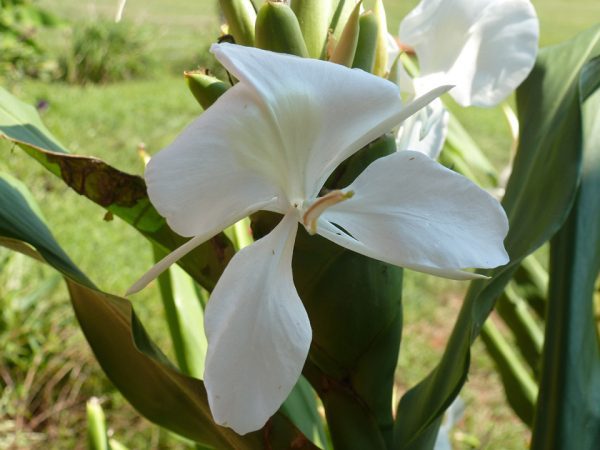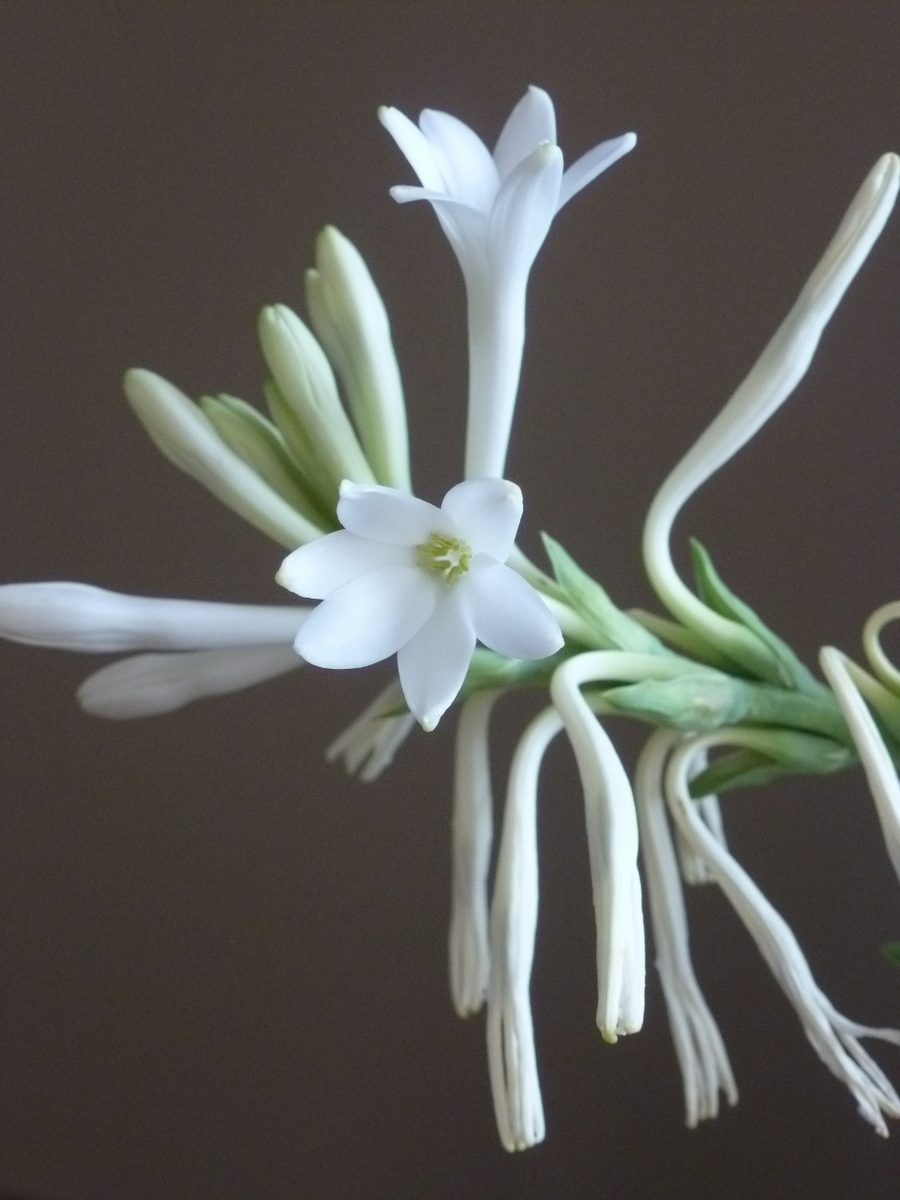Fragrant late summer flowers

Even though late summer brings the promise of cooler weather to the Piedmont, we still have the sultry presence of two old-fashioned and fragrant Southern favorites in our gardens – the ginger lily and the tuberose.
Everything about the ginger lily (Hedychium coronarium) speaks of its origins in the tropical regions of Asia. This lush, leafy plant usually grows 3 to 6 feet tall, but some reach 8 feet. The alternate, lance-shaped leaves stair-step up a thick central stalk. This architectural statement is topped with a large cluster of blooms. The flowers come in white and shades of orange on the different varieties. Some are as delicate as the body of a wasp; others are chubby butterflies. A few of them open at a time over the course of several weeks, producing an intense and complex fragrance reminiscent of honeysuckle. Good thing they don’t all open at once – we’d all be swooning like a tightly-corseted Southern belle.
A plant with so many sterling attributes usually has some fatal flaw – and ginger lily is no exception – but fortunately it doesn’t apply to those of us in the Piedmont. While they’re ostensibly restricted to Zones 8-10, they’ve proven hardy in gardens from Ophir to Charlotte, all firmly within Zone 7B. All they ask is a soil that’s slightly moister than average and a nice, rich layer of mulch. They’ll bloom best in full sun, but they can tolerate light shade. They aren’t susceptible to any particular pest. The tubers multiply like crazy, making them easy to divide and share with friends and neighbors. In fact, Southern Living listed ginger lily as one of its top 10 pass-along plants.

I’ve never grown tuberoses (Polianthes tuberosa), but I’ve been fortunate to find them on offer among the pedestrian zinnias at my local farmers markets in Atlanta and Charlotte. The long, thin stalks terminate in clusters of tubular white flowers that seem to cry out for a specialized pollinator. Like the ginger lily, they open a few at a time, allowing them to hold up well in a vase. They’re perfectly lovely during the day, but they’re enchanting in the evening when their fragrance becomes especially pungent. It’s a heady aroma – musky, spicy and floral. The last time I bought a bouquet, it had to be moved to our balcony; the smell from only six stems overwhelmed our apartment. These qualities made tuberoses a favorite in Victorian moon gardens, but they later fell out of favor after being overused in funeral arrangements.
Some Piedmont gardeners claim tuberoses are persnickety, producing lots of foliage, but few, if any, blooms. Tuberoses are native to Mexico – related to desert-dwelling agaves – so perhaps they prefer a looser, leaner soil. While they require full sun to flower, direct sun during the heat of the day might be too much. Another issue is that each tuber blooms only once. It can take a few years before the new lateral crowns reach maturity. Piedmont gardeners are often advised to dig up the bulbs at the end of the season – after the foliage has ripened – and store them in a cool, dry location, but that probably isn’t necessary. Even though tuberoses are listed as being hardy only in Zones 8-10, the folks at Brent and Becky’s Bulbs in Gloucester, Va., say theirs overwinter just fine in Zone 7 with a cozy blanket of mulch.
Easy or challenging to cultivate, these fragrant exotics earn a place among the native plants in our Piedmont gardens.